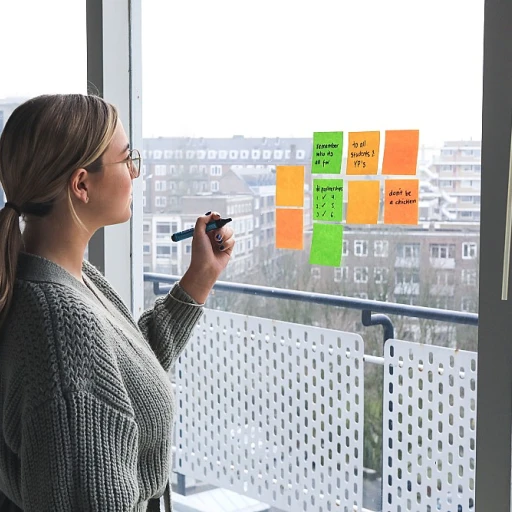Understanding the Importance of Work-Life Balance
The Growing Need for Balancing Professional and Personal Lives
In recent years, the concept of work-life balance has gained significant traction across various industries, as professionals strive to maintain harmony between their career and personal lives. This balance is not only vital for individual well-being, but it also plays a crucial role in enhancing company culture and team dynamics. According to a report by the American Psychological Association, employees with a good work-life balance tend to be more productive, engaged, and satisfied with their jobs.
The pressures of today’s fast-paced work environment often lead to stress and burnout, affecting employees’ efficiency and morale. Facilitating a healthy balance through strategic initiatives like corporate retreats can be an effective solution. These retreats offer employees an opportunity to unplug, focus on team building, and develop stronger interpersonal relationships.
Corporate retreats provide an avenue for teams to step away from their regular office routines and immerse themselves in a more relaxed and collaborative setting. By integrating various retreat activities, companies can create memorable experiences for their employees, fostering better communication and problem solving.
Successful work-life balance initiatives require thoughtful planning and a deep understanding of what employees need to thrive. Gathering feedback from team members and organizing activities that resonate with their interests will ensure that the retreat meets its objectives. Building team cohesion through carefully curated retreat ideas, such as escape room challenges or scavenger hunts, can significantly enhance long-term collaboration.
As organizations increasingly prioritize employee well-being, it becomes essential to recognize the impact of these efforts on overall company productivity and morale. With the right approach to planning and implementing effective retreats, companies can bridge the gap between work demands and personal fulfillment, cultivating an environment where employees feel valued and motivated.
For further inspiration on enhancing engagement, consider exploring
inspiring quotes for boosting people engagement that can serve as motivational tools both during retreats and in everyday work life.
The Role of Corporate Retreats in Work-Life Balance
Retreats as a Crucial Component of Work-Life Harmony
Corporate retreats play a pivotal role in fostering a healthy work-life balance by offering a dedicated time and space away from the usual office environment. These retreats provide an opportunity for team members to disconnect from everyday work pressures and engage in activities designed to promote relaxation, creativity, and collaboration.
Retreats help build a cohesive team atmosphere, allowing employees to engage in unique team-building exercises outside their usual work routine. Whether it's an escape room or a scavenger hunt, structured retreat activities encourage problem solving and teamwork, essential elements for strengthening team bonds.
Furthermore, corporate retreats create an environment where open communication is encouraged, contributing to improved understanding among teams. This enhanced communication is vital for team dynamics and reflects positively on group performance once back in the workplace.
For companies looking to enhance employee well-being and team dynamics, the benefits of organizing a work retreat are numerous. Retreats not only contribute to personal well-being but also help form a robust company culture. For more inspiration, you might find it helpful to explore
engaging team building activities for Thanksgiving, which offer additional creative retreat ideas.
In conclusion, corporate retreats are instrumental in merging the personal and professional, offering a balanced experience that respects employees' need for personal time while enhancing team productivity and morale.
Types of Collaborative Activities at Corporate Retreats
Exploring Engaging Ways to Foster Team Collaboration
When it comes to enhancing team dynamics, corporate retreats serve as an invaluable platform to engage team members in collaborative activities. These activities are not only a driving force for team building but also play a crucial role in fortifying work-life balance principles within the company culture. The variety of retreat activities that companies can implement provides endless opportunities for development and bonding.
Organizing activities such as an escape room experience or a scavenger hunt can be an excellent way to improve problem solving and communication skills among team members. Escape rooms encourage teams to collaborate under pressure, requiring each person to contribute actively. On the other hand, scavenger hunts promote group strategy development and time management, providing a fun backdrop for employees to interact and build relationships outside traditional work settings.
Other collaborative activities like creative workshops, where teams are given a chance to brainstorm innovative solutions, and team-building challenges, foster creativity and open communication. In addition, structured team bonding sessions, like role-playing games or outdoor challenges, encourage employees to step out of their comfort zones and embrace different perspectives.
Corporate retreats are designed to create a balance between professional development and personal enjoyment. Such activities not only enhance the overall team experience but also align with the
creative ways to show employee appreciation, emphasizing the company’s commitment to nurturing a supportive environment. This balance ultimately reflects positively on the company's overall productivity and employee satisfaction.
Benefits of Collaborative Activities for Teams
Reaping the Rewards of Team Collaboration
When discussing the advantages of collaborative activities within corporate retreats, several key benefits make them an invaluable component of any company retreat. These activities are more than just fun diversions; they are strategic tools that can significantly influence team dynamics and overall company culture.
- Enhanced Communication: Corporate retreats often feature retreat activities designed to break down communication barriers. Whether it’s through a problem-solving escape room or a group scavenger hunt, employees learn to communicate effectively, leading to improved work relationships.
- Stronger Team Bonds: Team bonding is critical for creating a cohesive work environment. Building activities such as group brainstorming sessions or outdoor challenges enable employees to connect on a personal level, strengthening the team and enhancing collaboration.
- Innovative Problem Solving: Retreats are a prime opportunity for out-of-the-box thinking. When employees are away from their usual work setting, they can approach problems more creatively, often leading to innovative ideas and solutions.
- Increased Employee Satisfaction: A well-planned staff retreat signals to employees that the company values their work-life balance and well-being. This acknowledgment can boost morale and increase overall job satisfaction, which is beneficial for productivity and retention.
- Effective Team Building: By participating in team building activities during a corporate retreat, employees develop a deeper understanding of each other's strengths and weaknesses, which can align team roles and improve project planning.
These benefits highlight how essential retreats can be for a company focused on fostering a robust and collaborative work environment. With thoughtful retreat planning, organizations can harness the potential of retreat activities to drive communication, collaboration, and a strengthened team spirit.
Challenges in Organizing Effective Retreats
Identifying Hurdles in Organizing Successful Retreats
Organizing a successful company retreat requires thoughtful planning, as it involves managing logistics, ensuring effective team participation, and fostering a conducive environment for collaboration. However, there are several challenges that companies might face in orchestrating an effective work retreat.
- Logistical Complexities: The process of arranging accommodations, transportation, and suitable retreat activities can be daunting. Coordinating these elements to create a seamless experience for team members often requires detailed planning and considerable time investment.
- Diverse Team Needs: Employees have varied preferences and comfort levels towards group activities. Striking a balance between inclusive retreat ideas and maintaining a comfortable yet engaging experience for all team members is essential. Retreats must cater to different interests, from an escape room challenge to a laid-back scavenger hunt.
- Company Culture Integration: One of the primary goals of retreats is to strengthen company culture. However, aligning retreat activities with the values and goals of the company, while still encouraging genuine communication and collaboration, can pose a challenge. Ensuring activities are meaningful and connect back to corporate objectives is crucial for maximizing impact on team bonding.
- Effective Time Management: It's vital to utilize the retreat effectively. Poor retreat planning can lead to a lopsided distribution of time, with too much focus on team building activities and not enough on individual reflection or creativity enhancement. Balancing structured time with free exploration is important for creating a successful retreat experience.
- Budget Constraints: Corporate retreats can be expensive, and budget limitations may constrain the scope of activities included. Prioritizing cost-effective collaboration ideas without compromising on the quality of the experience is another potential hurdle.
By addressing these challenges head-on, companies can create rewarding retreat experiences that contribute positively to team dynamics and help reinforce the work-life balance within their teams. Overcoming these hurdles can lead to successful company retreats that have a long-lasting impact on both individual well-being and the collective spirit of the organization.
Measuring the Impact of Retreats on Work-Life Balance
Evaluating the Influence of Retreats on Balancing Work and Life
Measuring the impact of corporate retreats on work-life balance requires a nuanced approach. Given the dynamic nature of team interactions, retreat activities, and individual expectations, a comprehensive assessment is crucial. Here's how you can evaluate effectiveness:
- Pre and Post-Retreat Surveys: These are vital tools to gauge changes in employee perspectives. Surveys should focus on areas like work satisfaction, communication within teams, and the ability to manage stress post-retreat.
- Feedback Mechanisms: Encourage open communication among team members post-retreat. Exploring team members' honest feedback on activities, like team bonding exercises or problem-solving scenarios such as escape rooms, helps in understanding their experience better.
- Observational Insights: Managers and team leaders can offer critical insights based on their observations of team dynamics during the retreat. This method is qualitative and can highlight subtle improvements or issues overlooked by surveys.
- Employee Performance Metrics: Compare performance indicators before and after the retreat. Improved collaboration, innovative idea contributions, and efficient communication channels are signs of a successful company retreat.
- Course of Action for Future Retrets: Based on these assessments, rethink and innovate your retreat planning to create a more supportive environment for achieving work-life balance. Activities including scavenger hunts, group discussions, and building retreats can be remodeled to better suit company culture.
- Engagement and Participation Rates: Higher participation and engagement levels during retreats often indicate a positive influence. Aim to record specific events that gather the most interest from employees.
By employing these methods, companies can effectively measure the impact corporate retreats have on balancing work and life, enhancing not only the company's investment but also the team dynamics and individual well-being in the long run.













